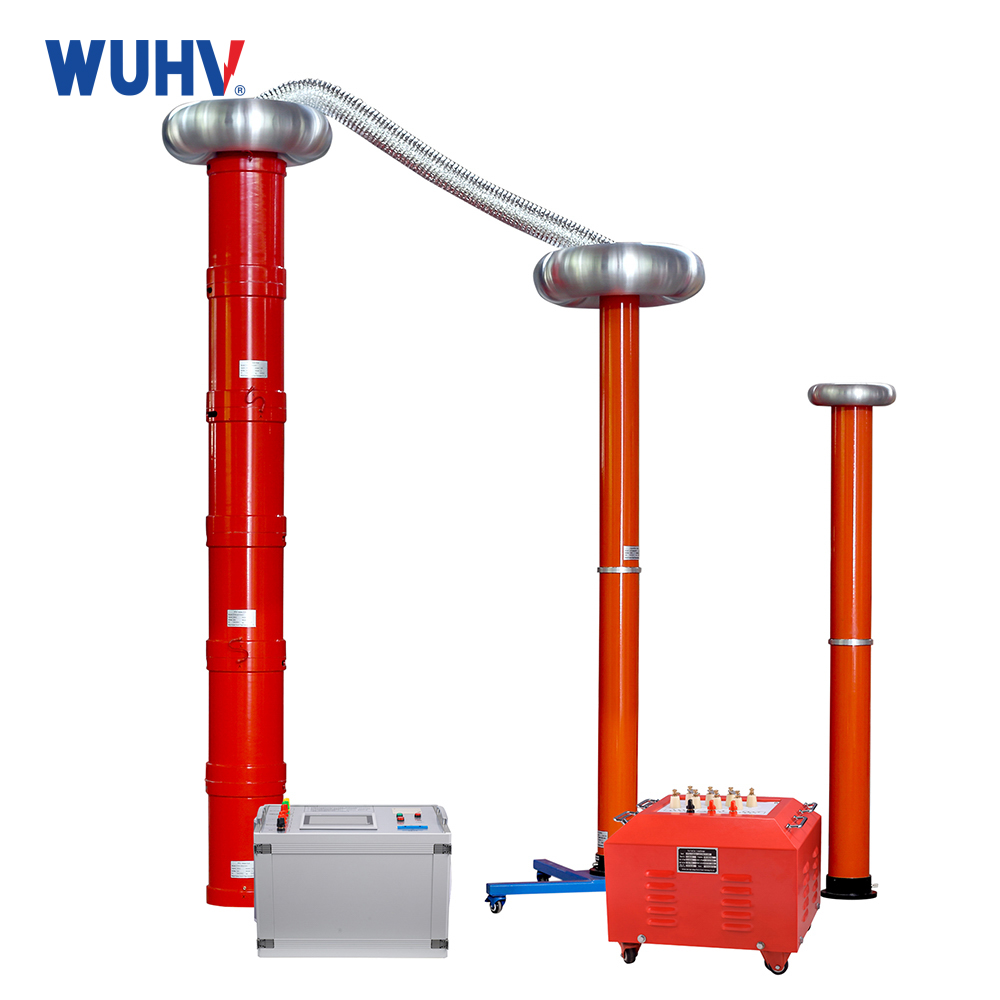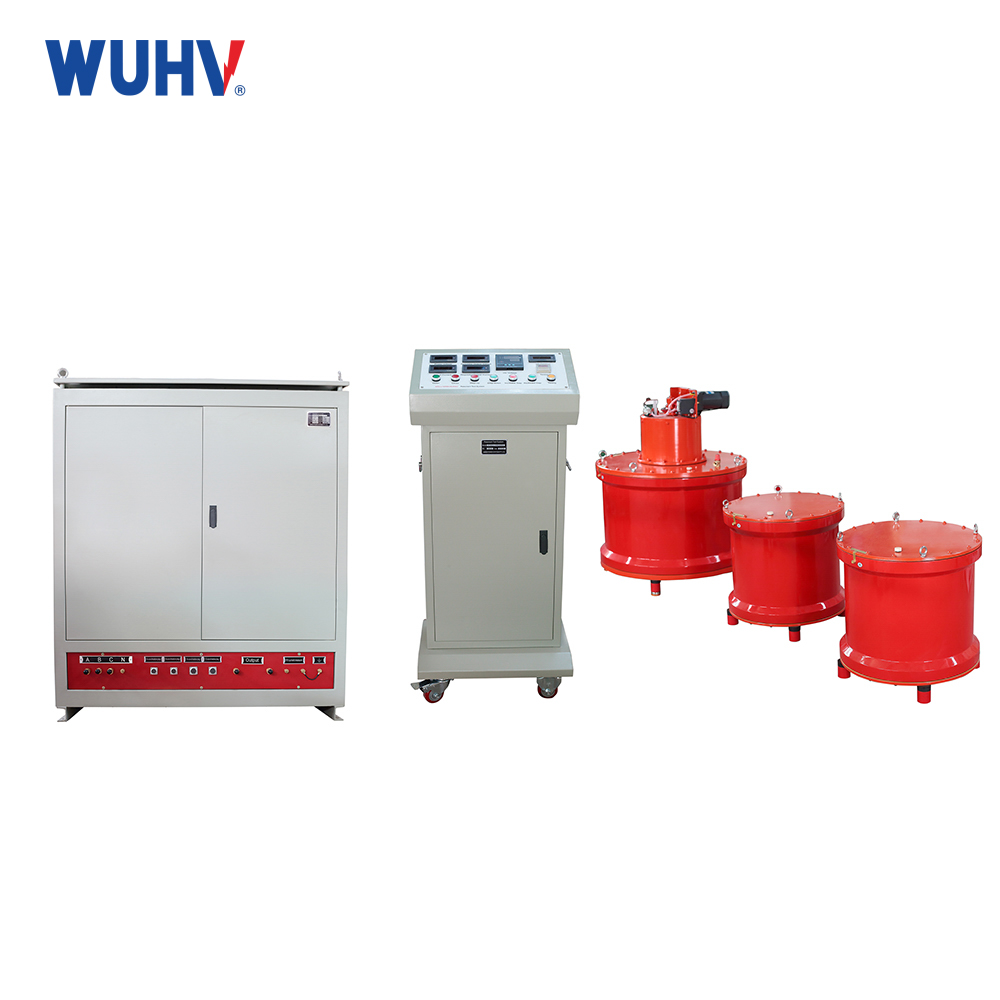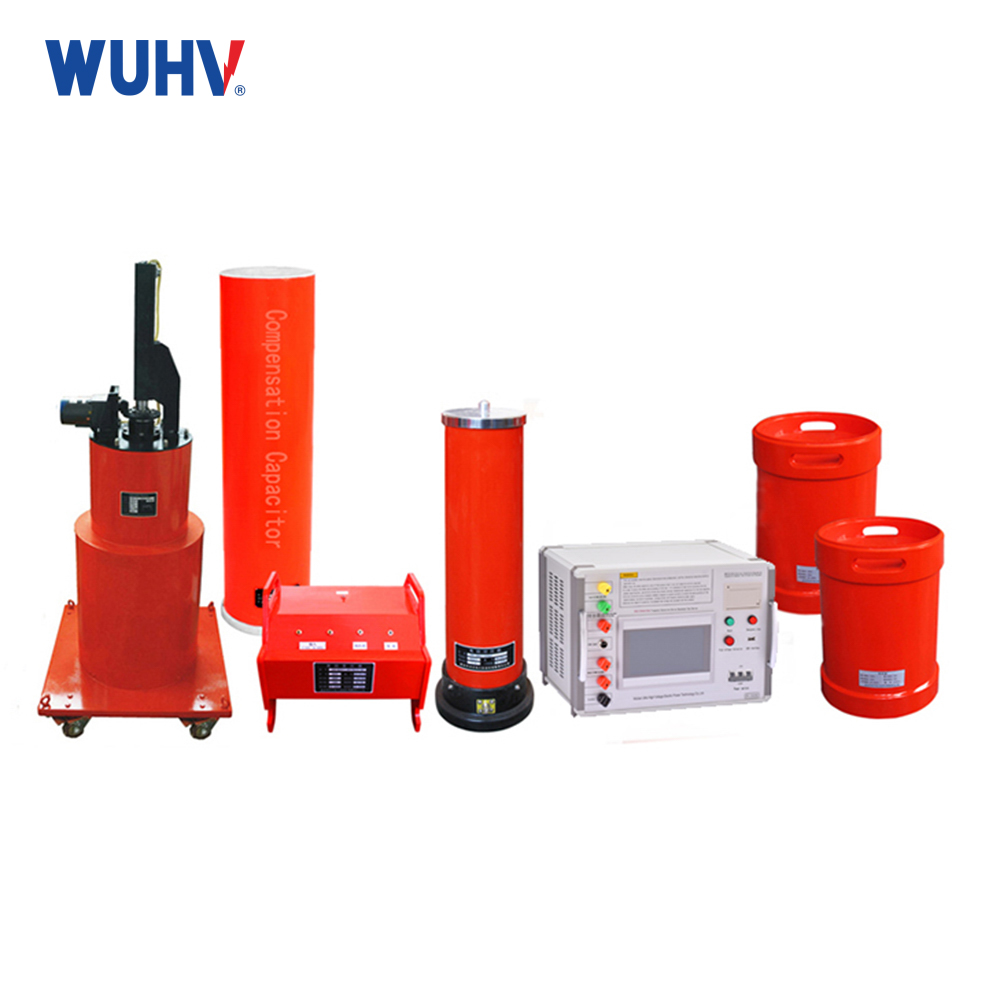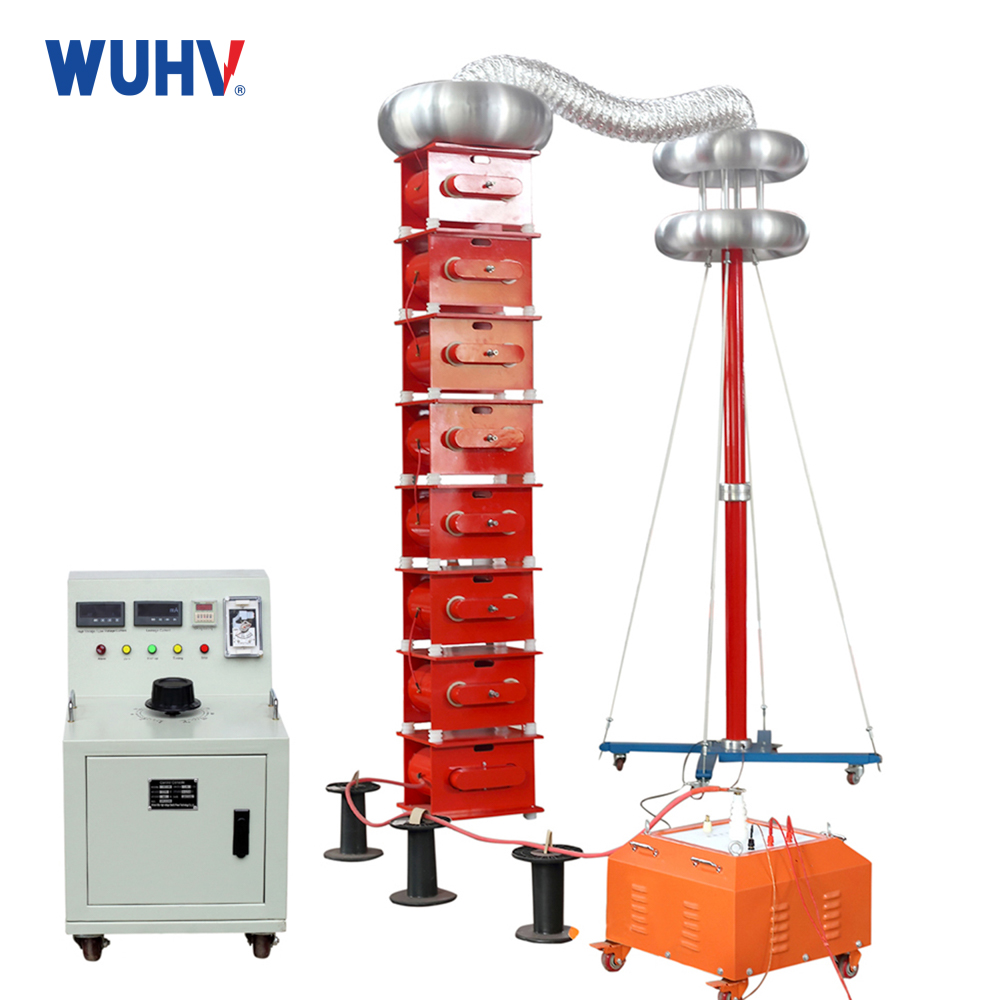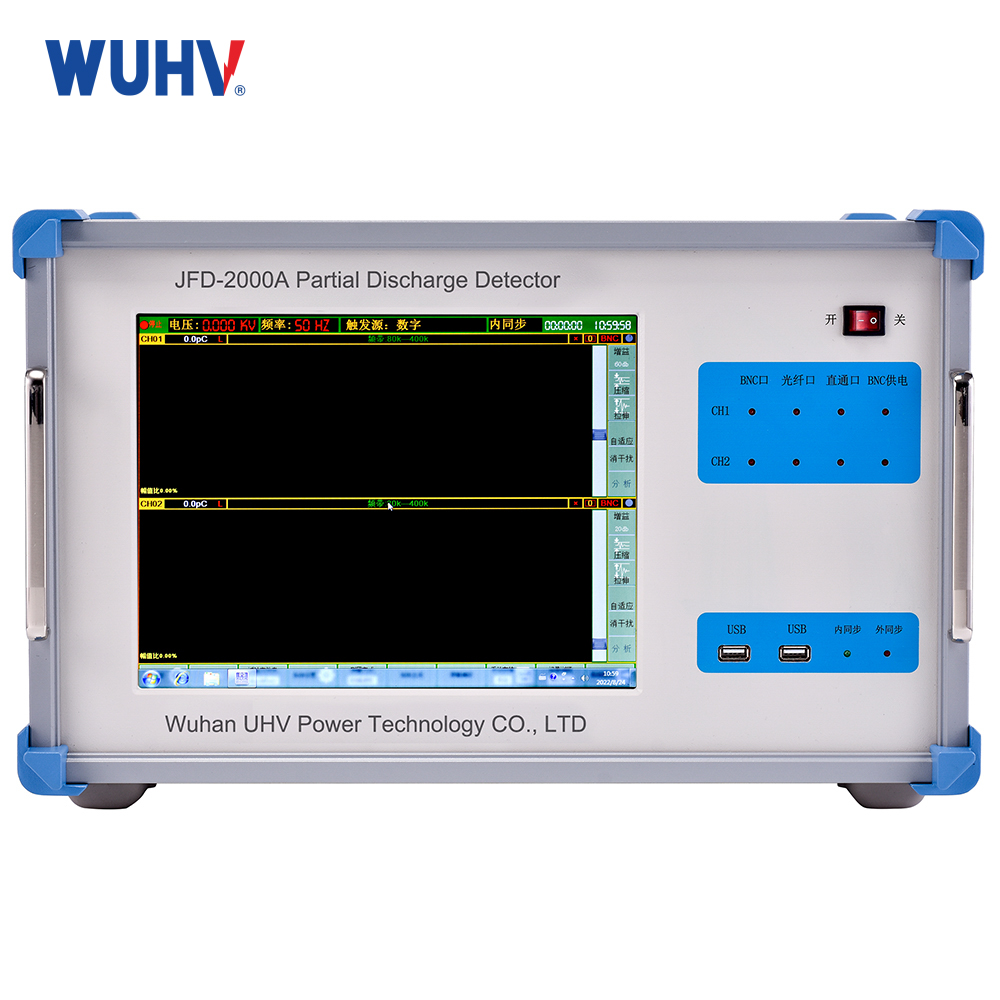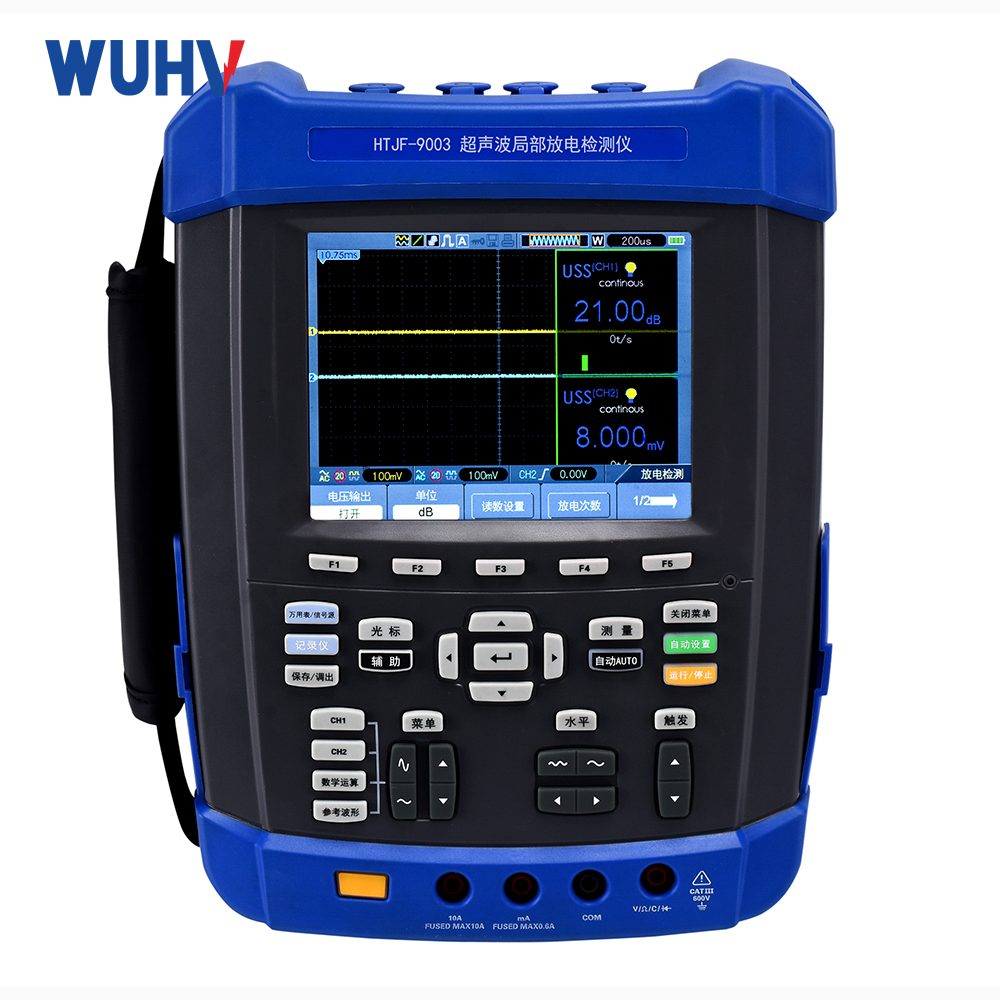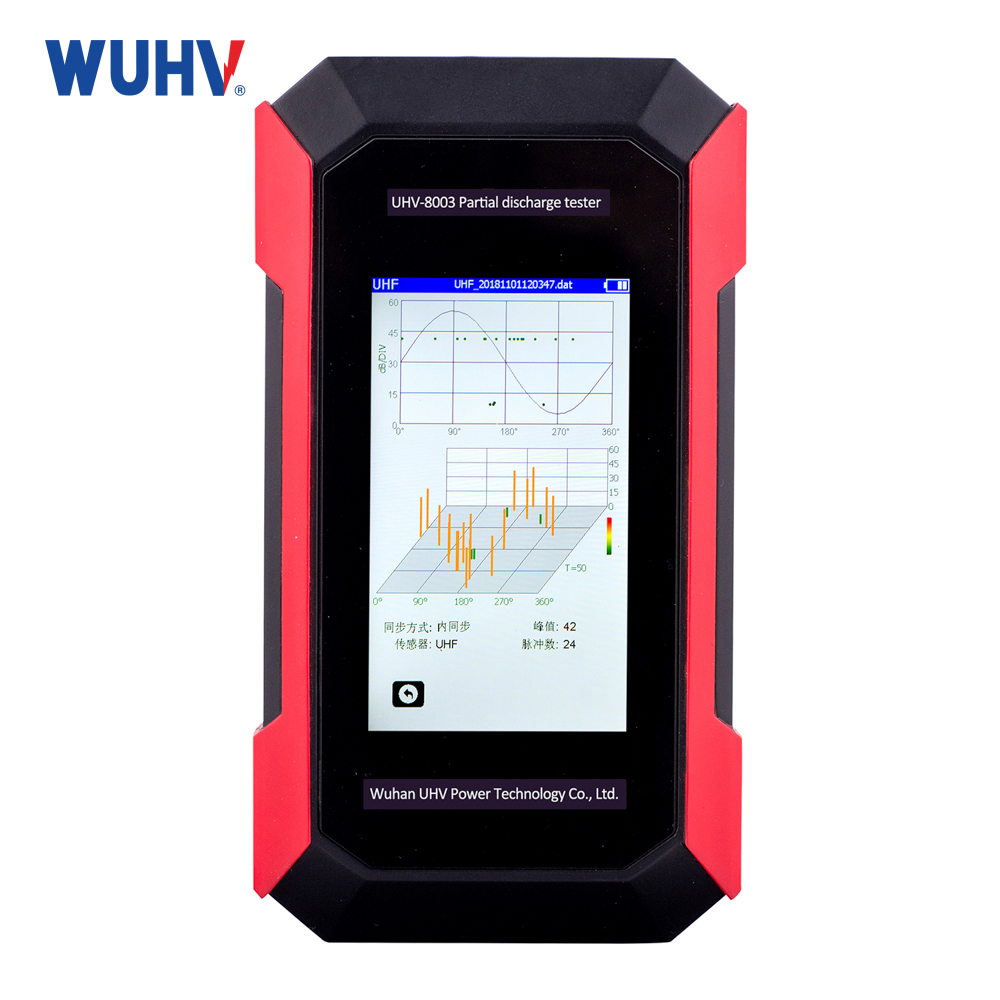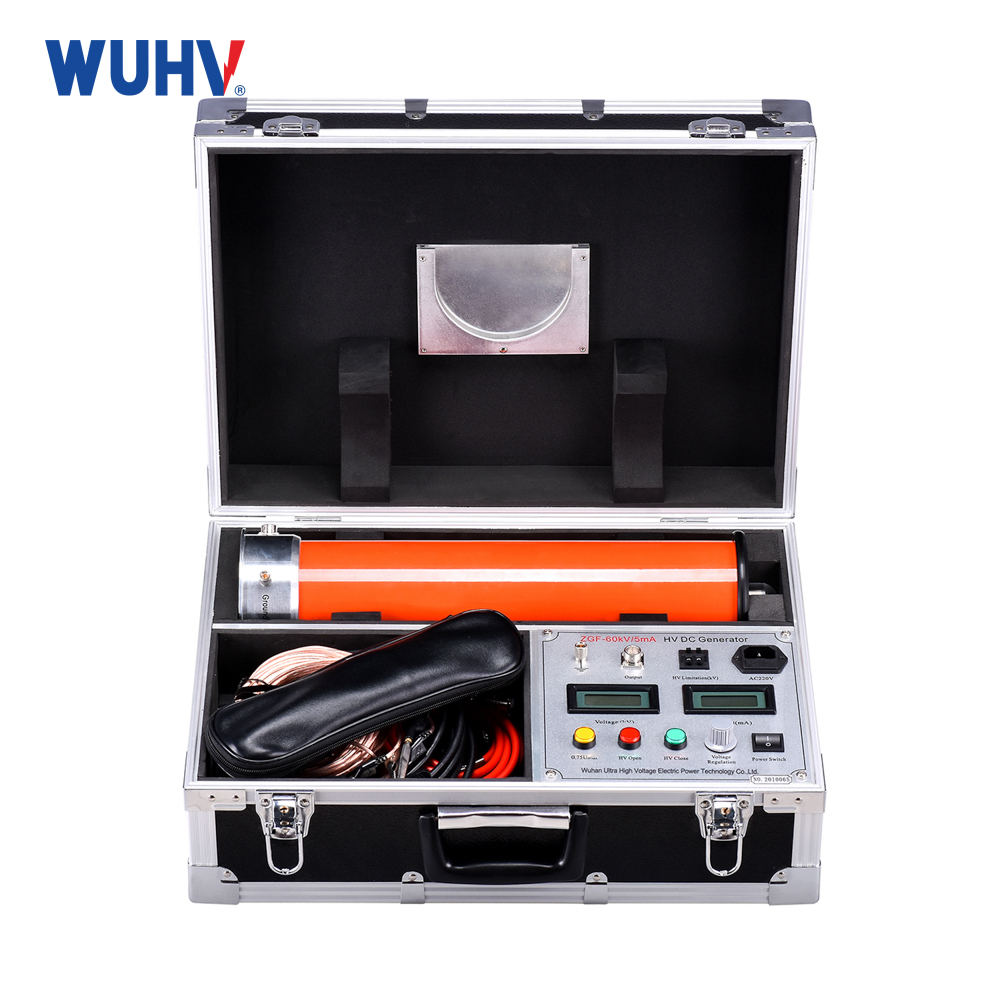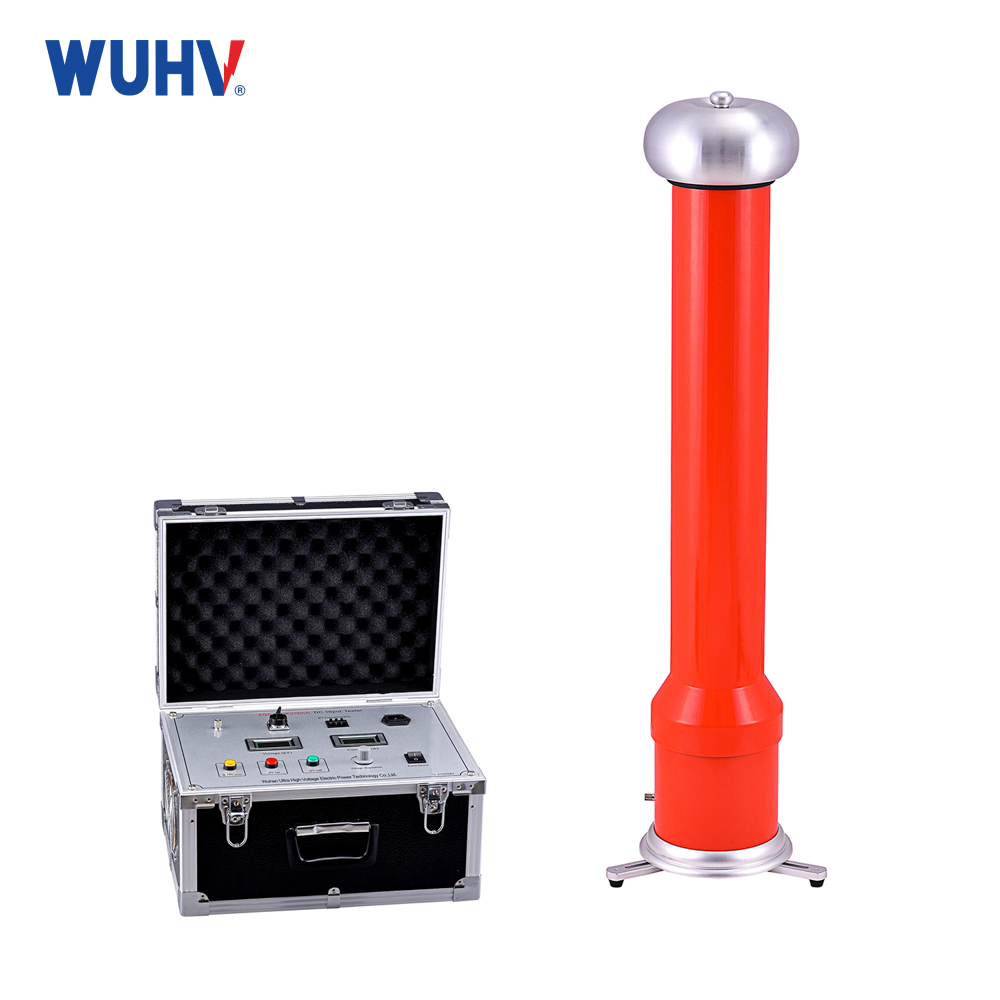Wuhan UHV specializes in producingseries resonance (also known as AC/DC voltage withstand test device). Next, we will share with you the hazards of non sinusoidal waves on AC voltage withstand tests.
1. When conducting AC withstand voltage tests, some voltage measuring instruments measure the effective value of the voltage. Power frequency discharge or breakdown generally determines the amplitude of the voltage. When the test voltage waveform is non sinusoidal, the ratio of the amplitude of the voltage to the effective value (i.e. the crest factor) is not √ 2. When the waveform is severely distorted, a large third harmonic component is mainly superimposed on the sinusoidal fundamental component, resulting in a crest factor of 1.45-1.55. At this time, if the amplitude is calculated by multiplying the effective value by √ 2, it will cause significant test errors.
2. The waveform of the power frequency test voltage also has a certain impact on the insulation test results of certain electrical equipment (such as transformers), because the insulation performance of some insulation materials is related to the voltage frequency. Non sinusoidal voltages containing high-order harmonics applied to organic insulation materials can increase dielectric losses, cause insulation overheating, and reduce voltage resistance.
3. The International Electrotechnical Commission (IEC) stipulates that the test voltage should be an AC voltage with a frequency of 40-62Hz, and the voltage waveform should be close to a sine wave (in fact, pure sine waves are often difficult to obtain). The two half waves should be exactly the same and the ratio of peak value to effective value should be equal to √ 2 ± 5%, or the effective value of harmonics should not exceed 5% of the effective value of the fundamental wave.
4. The test voltage should generally be an AC voltage with a frequency of 45-65Hz, commonly referred to as the power frequency test voltage. The waveform of the test voltage is an approximate sine wave with two identical half waves, and the ratio of peak value to root mean square (effective) value should be within √ 2 ± 5%. If these requirements are met, it is considered that the high-voltage test results are not affected by waveform distortion.



